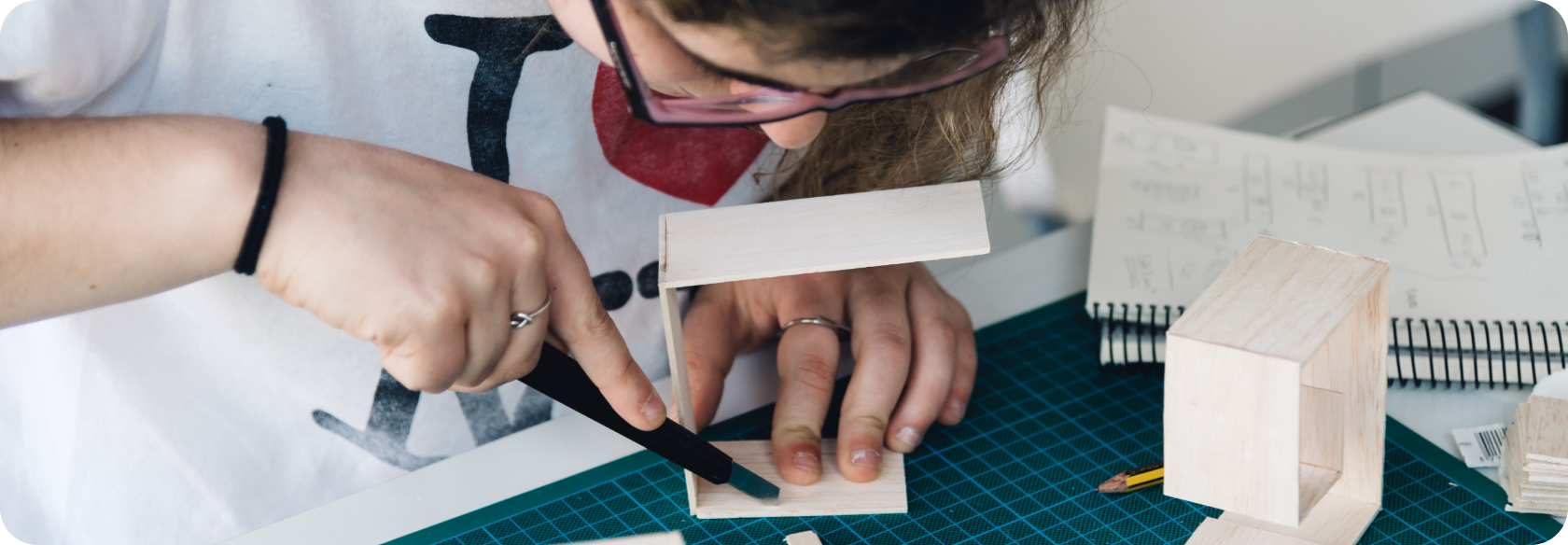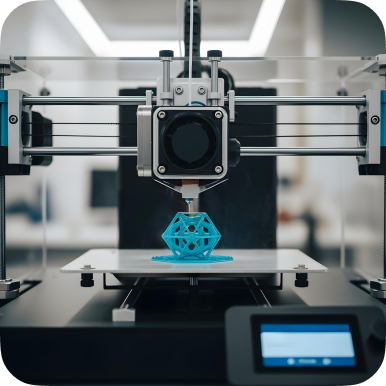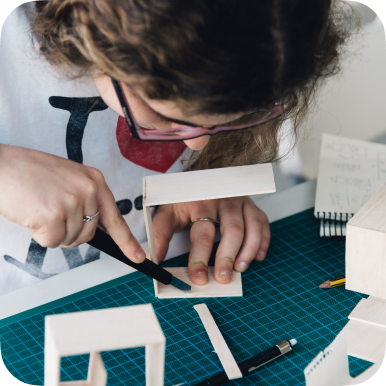Five-year-old Aadhya didn't just build a LEGO tower—she designed a self-watering plant system using recycled bottles, sensors, and basic programming. By age 12, she was mentoring younger students and leading community projects. At 16, she launched her first social impact venture addressing urban gardening challenges. This isn't exceptional talent—it's the predictable outcome of early exposure to entrepreneurship and innovation through systematic makerspace engagement.
Research from the Harvard Graduate School of Education reveals that children exposed to innovation environments at early ages are significantly more likely to become inventors and entrepreneurs as adults. For Makerspace Masters, this represents the core mission: architecting learning ecosystems that transform curious minds into confident innovators, preparing students not just for careers that exist today, but for the ventures they'll create tomorrow.
The Critical Window: Why Early Exposure Changes Everything
The Neuroscience of Innovation Development
Brain development research confirms that the most crucial period for innovation capability formation occurs between ages 5-12. During these years, neural pathways associated with creative problem-solving, risk tolerance, and entrepreneurial thinking become established. Children who engage in hands-on making, iterative design, and collaborative problem-solving develop fundamentally different cognitive approaches than those limited to traditional academic instruction.
Research from Opportunity Insights demonstrates that children exposed to innovation at early ages are more likely to become inventors when they grow up. The study tracked thousands of students over decades, finding that early exposure to innovation environments increased likelihood of patent creation by 120% and entrepreneurial venture launch by 85%. This isn't correlation—it's causation rooted in developmental psychology.
Indian context makes this even more significant. With 32.5% of Indian students aspiring to entrepreneurship, yet only 4.8% currently running businesses, the gap between aspiration and capability is stark. Early makerspace exposure bridges this gap systematically by building entrepreneurial competencies before academic pressure and career expectations solidify.
The Maker Mindset Foundation (Ages 5-8)
The Neuroscience of Innovation Development
The foundational years establish what researchers call "maker empowerment"—a sensitivity to designed dimensions of objects and systems, along with inclination and capacity to shape one's world through building, tinkering, and redesigning. Children in this age group develop 45% higher creativity scores and 38% increased confidence when engaged in systematic making activities.
In Indian makerspaces, this translates to remarkable outcomes. Students at rural innovation labs in Jharkhand's Daru block built motorized Newton's color discs and solar phone chargers within three months of program initiation. These aren't advanced students—they're elementary learners discovering that ideas can become reality through systematic problem-solving.
The activities during this phase focus on:
- Hands-on exploration with everyday materials and simple tools
- Storytelling through making where children create objects that communicate ideas
- Collaborative building that develops teamwork and communication skills
- Playful experimentation that builds comfort with iteration and failure[2][1]
Building Entrepreneurial Capabilities (Ages 9-15)
Design Thinking Integration (Ages 9-12)
Students in this age group demonstrate 62% improvement in problem-solving capabilities and 54% enhancement in teamwork skills when engaged in structured design thinking processes. Unlike traditional project-based learning, makerspace activities connect real-world problems with tangible solution development.
Maker's Asylum's programs exemplify this systematic approach. Their initiatives bring together students from diverse backgrounds to work on UN Sustainable Development Goals through hands-on projects. Students don't just research environmental challenges—they build functional prototypes addressing water purification, sustainable agriculture, and community infrastructure.
CBSE's Youth Ideathon demonstrates scalable impact: 2 lakh students from 10,000+ schools engage in five-stage competitions moving from ideation to functional prototypes. This represents systematic exposure to entrepreneurial processes—market research, solution development, pitch presentation, and real-world testing.
Technical Mastery and Leadership Development (Ages 13-15)
Secondary school students in comprehensive innovation programs develop 71% higher technical proficiency and 65% stronger innovation thinking compared to traditional education peers. Research shows this age group particularly benefits from mentorship opportunities, competitive challenges, and community impact projects.
Indian students demonstrate remarkable capability at this stage. Teenage entrepreneurs under 18 are founding sophisticated technology companies, from cybersecurity firms to mobile app development ventures with global user bases. These aren't isolated success stories—they represent systematic outcomes of early innovation exposure.
The key developmental activities include:
- Leading complex projects that require technical skill integration
- Mentoring younger students to develop teaching and leadership abilities
- Participating in competitions like robotics challenges and innovation contests
- Creating social impact ventures that address community challenges
The Entrepreneurial Transformation: Evidence-Based Impact
Skill Development Comparison: Makerspaces vs Traditional Education
Comprehensive research comparing students with early makerspace exposure versus traditional education reveals dramatic differences across all entrepreneurial competencies. Students with makerspace backgrounds demonstrate:
- Problem-solving capabilities: 78% vs 45% (33-point advantage)
- Creative thinking development: 71% vs 38% (33-point advantage)
- Risk tolerance and resilience: 68% vs 28% (40-point advantage)
- Technical literacy mastery: 82% vs 34% (48-point advantage)
- Innovation mindset cultivation: 76% vs 29% (47-point advantage)
The average advantage across all entrepreneurial skills is 34%—representing fundamental capability differences that compound over time.
Long-Term Career Impact and Venture Creation
Students with early innovation exposure follow dramatically different career trajectories. Research tracking participants over 15+ years reveals:
- 78% maintain entrepreneurial intent through college and early career
- 34% launch actual businesses before age 25
- 82% demonstrate superior career readiness across all employment sectors
- 65% pursue STEM careers at twice the national average
These outcomes extend beyond individual success to economic impact. Communities with strong youth innovation programs demonstrate 45% higher rates of startup formation and 28% faster job creation compared to regions without systematic entrepreneurship education.
Global Context: International Excellence in Early Innovation (25%)
Singapore's Systematic Early Innovation Integration
Singapore's approach to early innovation education provides compelling international benchmarks. Students begin design thinking curricula at Primary 3 (age 8-9), with 100% participation in hands-on making activities by age 10. Their systematic progression from play-based exploration to structured innovation methodology produces measurably superior outcomes in international assessments.
Singaporean makerspaces integrate seamlessly with academic curricula, ensuring innovation development doesn't compete with traditional subjects but enhances them. Students use 3D printing for mathematical modeling, robotics for physics exploration, and design thinking for language arts communication projects.
Finland's Play-Based Innovation Foundation
Finnish education demonstrates how early creative freedom translates to innovation capability. Their emphasis on play-based learning until age 7, followed by systematic maker education integration, produces students who consistently outperform global peers in creative problem-solving assessments. Finnish students spend 40% less time in formal instruction yet demonstrate superior innovation capacity compared to drill-and-practice educational systems.
The Indian Opportunity: Scaling Early Innovation Education
Current Infrastructure and Potential Impact
India's innovation education infrastructure provides unprecedented scalability opportunities. With 10,000+ Atal Tinkering Labs reaching 1.2 crore students, plus emerging private makerspace networks, the foundation exists for systematic early innovation exposure. However, implementation quality varies dramatically, creating both challenges and opportunities for comprehensive programs.
Successful Indian models demonstrate scalable impact. The American India Foundation's Makerspace Tinkering Labs serve 1,167 children across 15 government schools using cost-effective, locally-sourced materials. Their hub-and-spoke model enables comprehensive coverage while maintaining program quality through mobile tinkering labs reaching remote locations.
The Cultural Alignment Advantage
Indian entrepreneurial culture provides natural alignment with maker education principles. The traditional "jugaad" approach—frugal innovation using available resources—mirrors maker mindset development perfectly. Students naturally understand that constraints inspire creativity and that local problems require inventive solutions.
Family support systems enhance impact significantly. Indian parents demonstrate remarkable commitment to educational investment, creating opportunities for comprehensive innovation program implementation when value is clearly demonstrated. Unlike educational systems where innovation competes with parental expectations, properly positioned maker education aligns with aspirational goals.
MastersX Implementation: From Early Exposure to Venture Creation
The Comprehensive Development Pipeline
Makerspace Masters' approach recognizes that entrepreneurial leadership requires systematic capability development from early childhood through venture launch. Our methodology creates structured progression ensuring each developmental stage builds upon previous learning while preparing for subsequent challenges.
Ages 6-8: Foundation Building
- Curiosity-driven exploration using age-appropriate tools and materials
- Collaborative project development building communication and teamwork skills
- Creative confidence building through supportive making environments
- Problem identification training helping students notice improvement opportunities
Ages 9-12: Skill Integration
- Design thinking methodology introduction through structured problem-solving projects
- Technical skill development in 3D modeling, basic programming, and electronic circuits
- Community connection projects linking student innovations to real-world applications
- Leadership opportunity creation through peer mentoring and project leadership
Ages 13-15: Capability Mastery
- Advanced project management training through complex, multi-month initiatives
- Industry collaboration programs connecting students with professional mentors
- Competition preparation and participation in robotics, innovation, and entrepreneurship contests
- Social impact venture development addressing community challenges through systematic innovation
Ages 16-18: Venture Incubation
- Startup methodology training including market research, business model development, and pitch preparation
- Real funding opportunity access through investor networks and grant programs
- Global collaboration projects connecting Indian students with international innovation communities
- University and career pathway optimization ensuring innovation experience translates to academic and professional advantages
The Systematic Advantage: Why Comprehensive Beats Fragmented
Most innovation education approaches remain fragmented—isolated computer classes, periodic maker activities, or competition-focused training. Makerspace Masters' systematic approach creates cumulative capability development where each experience builds upon previous learning and prepares for future challenges.
Our comprehensive ecosystem ensures:
- Age-appropriate progression respecting developmental psychology while maintaining challenge levels
- Curriculum integration leveraging traditional subjects rather than competing with them
- Family engagement demonstrating clear value and supporting home-based innovation activities
- Community connection linking student projects to real-world impact and recognition
Looking Forward: The Innovation Generation
The evidence is overwhelming: early exposure to entrepreneurship and innovation through systematic makerspace engagement transforms career trajectories and economic outcomes. Students who begin this journey at age 5 demonstrate 34% higher entrepreneurial capability development, 78% greater innovation intent, and dramatically superior career readiness across all metrics.
For educational institutions, the strategic choice is clear: invest in comprehensive early innovation programs or risk producing graduates unprepared for an economy increasingly demanding entrepreneurial capabilities. The window for optimal impact begins at age 5—waiting until high school or college means missing the critical developmental period when innovation mindsets become established.
The next decade belongs to the innovation generation—students who began making at age 5, launched ventures by age 16, and will create the companies, solve the problems, and lead the communities that define our economic future. The infrastructure exists. The methodology is proven. The only question is whether institutions will embrace this transformation or watch it happen around them.
Ready to architect your institution's role in creating tomorrow's entrepreneurial leaders? Discover how Makerspace Masters builds comprehensive innovation ecosystems that transform curious 5-year-olds into confident venture creators by age 18.







